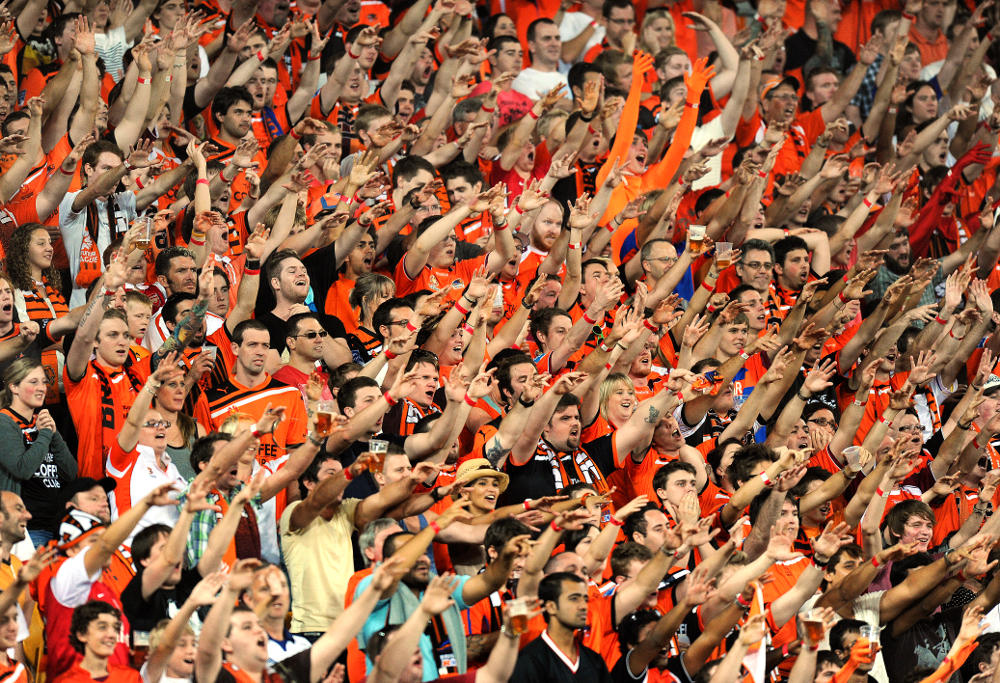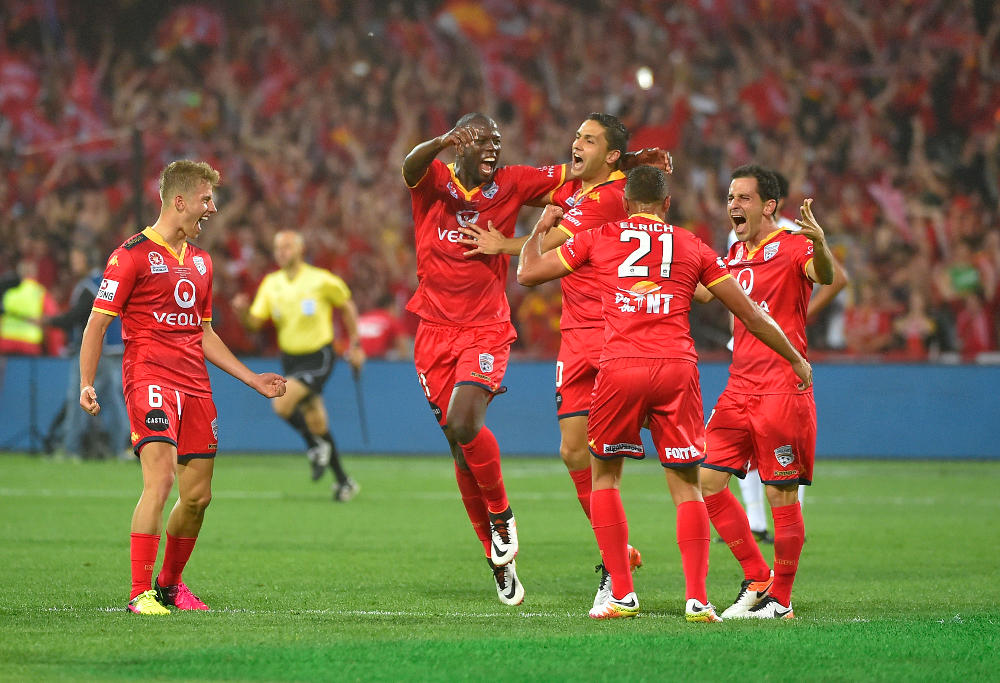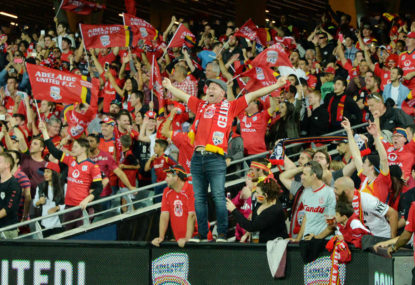Yesterday, Roar Expert Mike Tuckerman, wrote that “It’s time to ditch the A-League’s top six finals series.”
The point of rewarding mediocrity was the crux of what of the issue, while coupled with a throwaway line that the first week of the finals doesn’t typically attract larger crowds.
It was concluded by suggesting the FFA make the finals series a straight shootout between the top four.
Looking further into the points raised, it can be identified that throwaway lines and suggestions which have been tried before, show no real solution either and when you actually look into the reality of the situation. It’s sad false messages are spread.
Last season Brisbane Roar finished third and hosted Melbourne Victory, attracting an attendance of 20,157. During regular season, the highest attendance Roar attracted was 17,696 against Perth Glory in Round 13. When the Roar faced Melbourne Victory earlier in the season, they were only able to attract an attendance of 15,892. Overall the Roar had a regular season average of 12,850.
It is rather easy to see that for the Roar, the finals match they hosted was a success.
Melbourne City finished fourth and hosted Perth Glory, attracting an attendance of 11,237. Earlier in the season and on a Friday night mind you, Melbourne City faced Perth Glory and attracted only 5,953. Their highest non-derby attendance was their round 27 clash against Adelaide United which attracted 11,454.
City then shaped up to play again the week, in a home final against an opposition that historically has always been a low draw card.
This can be evidenced in the following data between City and Glory matches:
13/14 Round 18 5,346
14/15 Round 12 9,550
14/15 Round 18 6,486
15/16 Round 8 5,953
16/17 Round 3 8,076
16/17 Round 12 11,269
Despite the claims that the first week of the finals don’t typically attract big crowds and that “attendances for the elimination finals have been atrocious recently”, what I have highlighted is quite the opposite and disproves the more recent theory as some have suggested, that the FFA can’t point to the bottom line. All round, these statistics show improvement has been achieved.
To further my point, moving onto the second week of the finals.
Brisbane Roar travelled to face Wanderers whilst City travelled to face Adelaide. Wanderers attracted a crowd of 20,084 while Adelaide got 15,489.

For both of these teams it was a sellout and therefore no more people could turn out to watch the matches.
Some may then argue that these weren’t the highest attendances for each team, but in fact they were.
The Wanderers beat their Sydney derby attendance while Adelaide, although they had a regular season high attendance of 19,079, had this match played at Adelaide Oval.
Come finals, the fans wanted the home final match to take place at Hindmarsh Stadium, preventing an even higher attendance.
And we all know that Adelaide attracted a record high attendance of 50,119 for the grand final. So statistically, the argument the finals do not attract the interest is ridiculous, especially given the point being made was that it was rather recently.
This year heading towards the finish line, we have currently have the six best-attended football clubs in the league all residing in the top six.
What interest the finals will attract remains unknown for it is difficult to predict, but if we are to go just on the most recent finals, it may lead one to believe it is not all doom and gloom as other may say.
The other argument that it rewards mediocrity is a fair point and to be honest it is hard to dispute, though when the finals are the cash cow they are in the form of larger attendances and TV audiences, it is hard to see why the FFA and the football clubs would want out of such a system.
No team in the 12 seasons completed prior has ever won the championship from outside the top 2. Only on two occasions has a team made the grand final from third place.
So historically, the mediocrity is not rising to the top to cause such an uproar with regards to the current system.
In any case, be it that they do, then good luck to them. The team that finished first will still be regarded as Premiers and gain automatic qualification into the ACL, while the team that finishes second will have a chance to qualify for the ACL as well.
As it currently stands, all 10 teams are a mathematical chance of making the finals, I say this because it would appear likely Adelaide will not make it, but never say never.
The teams placed seventh through to ninth are all less than four points outside the top six with six rounds left to play and are all still a mathematical chance of finishing third or fourth.
This mediocrity that is rewarded has to go through one of the more difficult tasks of winning. Not only do they have to overcome the regular season form that saw them scrape into the finals, they have to somehow conjure enough belief they can knock off those above them.
They have to manage that while in the process not hosting a single finals match, travelling away for each fixture, and playing three knockout matches in total to be crowned the grand final winners.
If you can overcome all those obstacles then I applaud you for the other four to five teams that placed above you clearly then do not deserve to be crowned the grand final winners.
So although mediocrity may be an issue for now, for we will expand in the foreseeable future, the fact all teams are within a chance to make the finals creates hype and interest for the clubs both within the top six and those without. Because to be honest, we would all rather have our team in than not.

A suggestion was made that the finals series should be made a straight shootout between the top four.
As this was not expanded on, I am led to believe this can only occur one of two ways: straight knockout which only provides us with three matches and two weeks of finals, or a home and away leg for each team with the overall winners facing off an in GF decider. So five matches in total with three weeks of finals, as is the current length of finals football.
Some may or may not recall, but back in season one, we had a finals format consisting of only four teams. In that finals series, we saw a home and away leg for each of the teams, and what resulted was first place Adelaide losing overall to Sydney FC and then being provided another chance to defeat the Mariners, who knocked off the Jets.
In Adelaide’s home leg against Sydney FC in week one of the finals, they attracted 15,104. In their second chance to the mariners, they surprisingly got to host the final and only attracted 11,405 – a decrease.
The following season saw the exact same thing, with Adelaide attracting a larger crowd for the two-legged play-off, losing and getting another chance. The third season the exact same thing but for the Jets, and again for the next season with Adelaide.
The statistics are there, it is proven that a top four home and away leg, with the highest ranked team who loses, who gets another shot, attracts less people to the next final.
So a straight knockout would be preferred for when you assess these statistics, the finals attendances were at record highs.
But all that taken into consideration is not to say the current format now, doesn’t work. Attendances are not the only metric used. Viewing figures are another important and contributing factor.
As the seasons have gone by, the A-League has grown to where it currently stands today, and the finals series that have followed with six teams have seen record attendances and viewing.
The format does work, despite mediocrity being rewarded, and once expansion occurs, these discussions will hopefully seem a distant memory.
As I suggested in Mike Tuckerman’s article, we won’t revolutionise Australians’ way of thinking, but I think what is important is to have the FFA alter their way of thinking.
Yes, keep finals, but the way in which the premiership and its winners have been handled in recent memory are not what traditional football supporters are used too. It just needs to be given the attention it deserves, for finishing first after 27 rounds is no easy feat.
Unlike any other professional football code in Australia, we’re the only contrition that maintains some form of equality – so our competition’s winner is highly more credible than any other winner in any other competition. That cannot be disputed.
Not to mention our premier is rewarded with automatic qualification to a much grander stage, the Asian Champions League. No other competition that has a first place finish gains such a reward.
Discussions surrounding whether we drop or keep or agree/disagree with finals are pointless and provides no revolutionary way of timing. A more appropriate discussion should centre around us placing a greater expectation on the FFA that the premiership should be given more reward and appreciation.
There is nothing wrong with the finals. It’s the view from above with regards to premiers that’s all wrong. Change that and despite some who will still beat the drum of mediocrity being rewarded, at least those who place much greater value on the premiership, will feel it’s no longer being undone by the championship winners.































































































